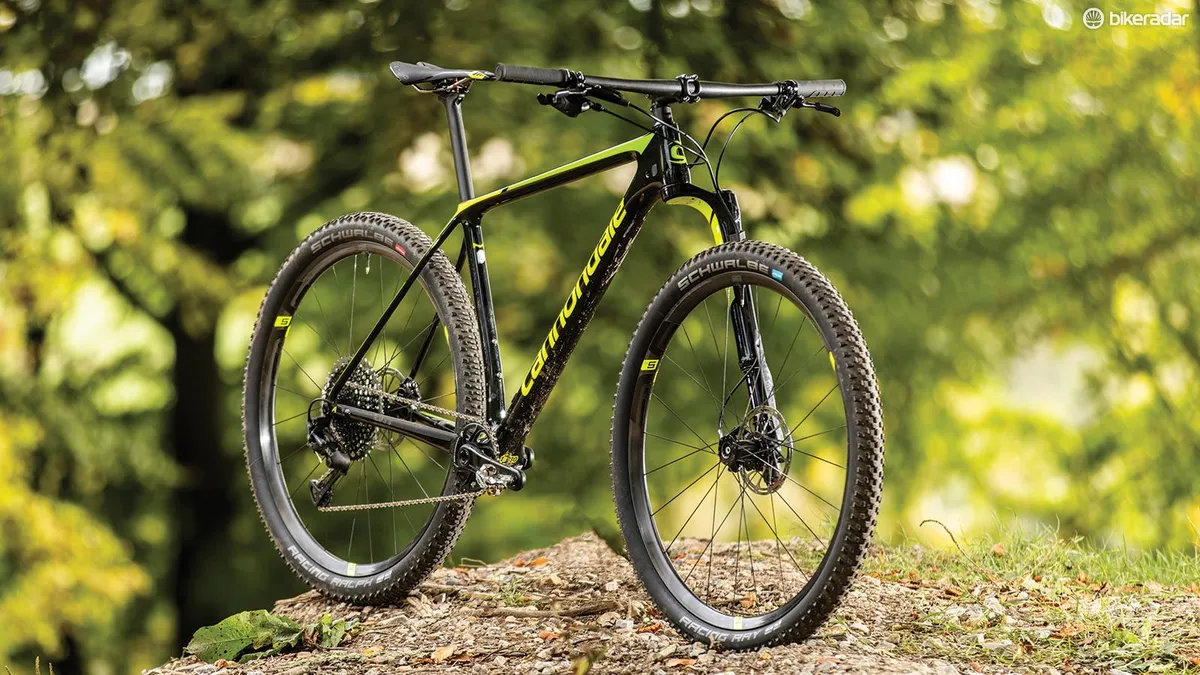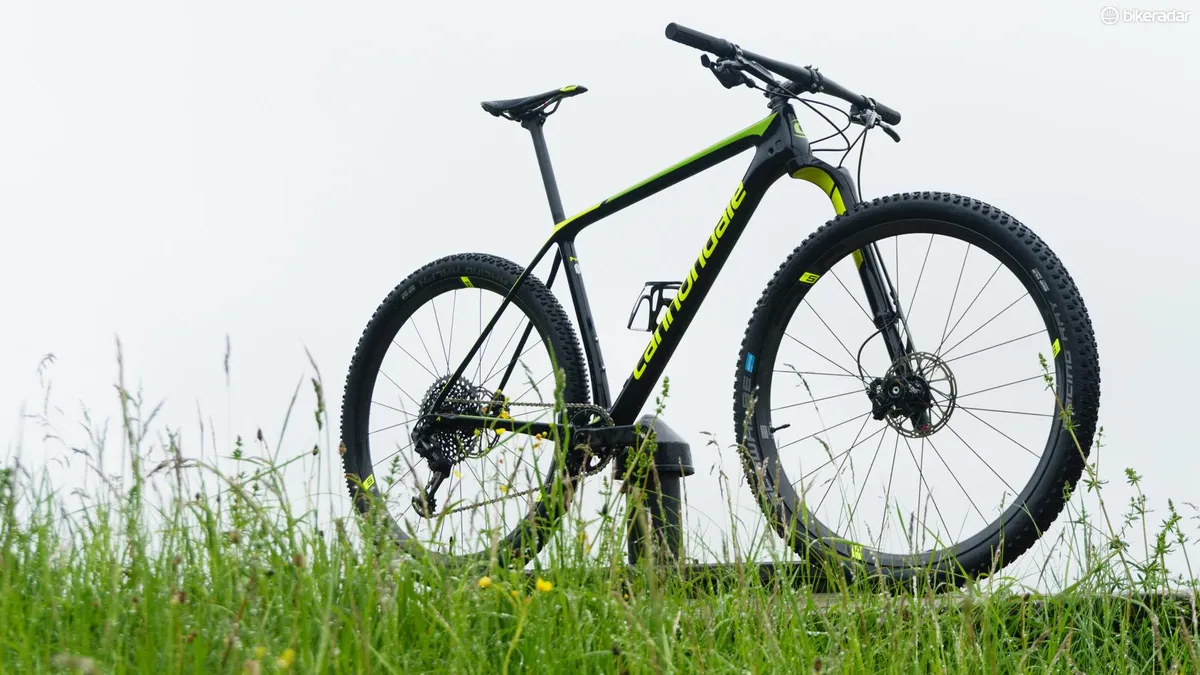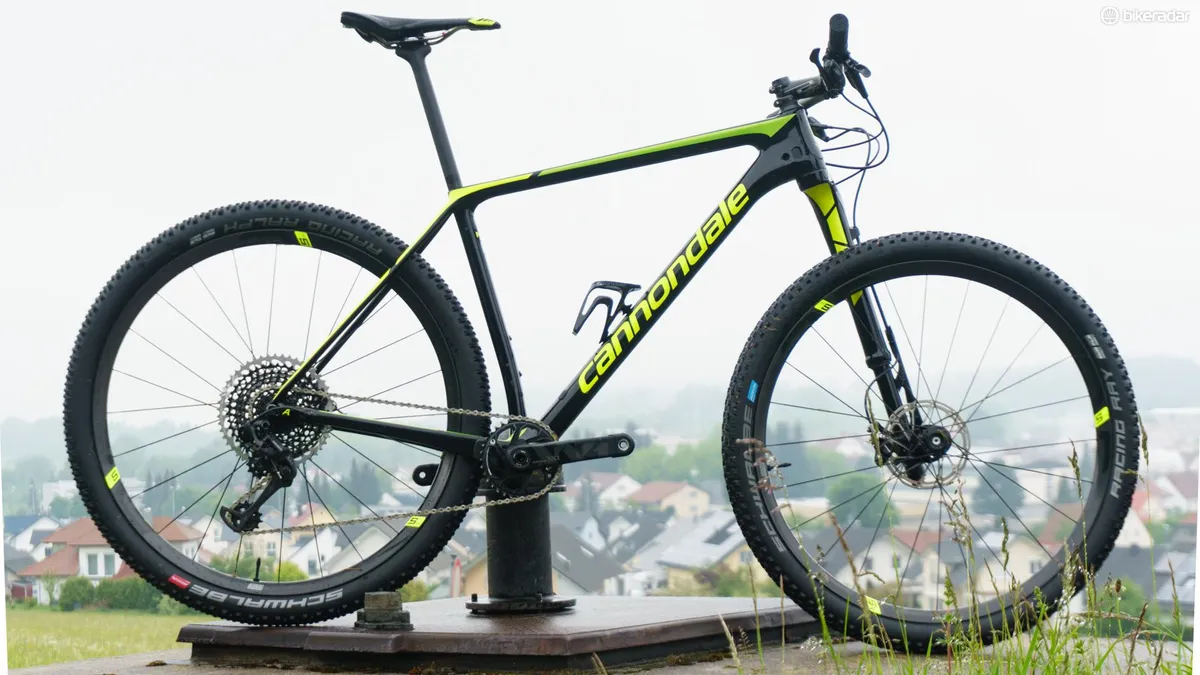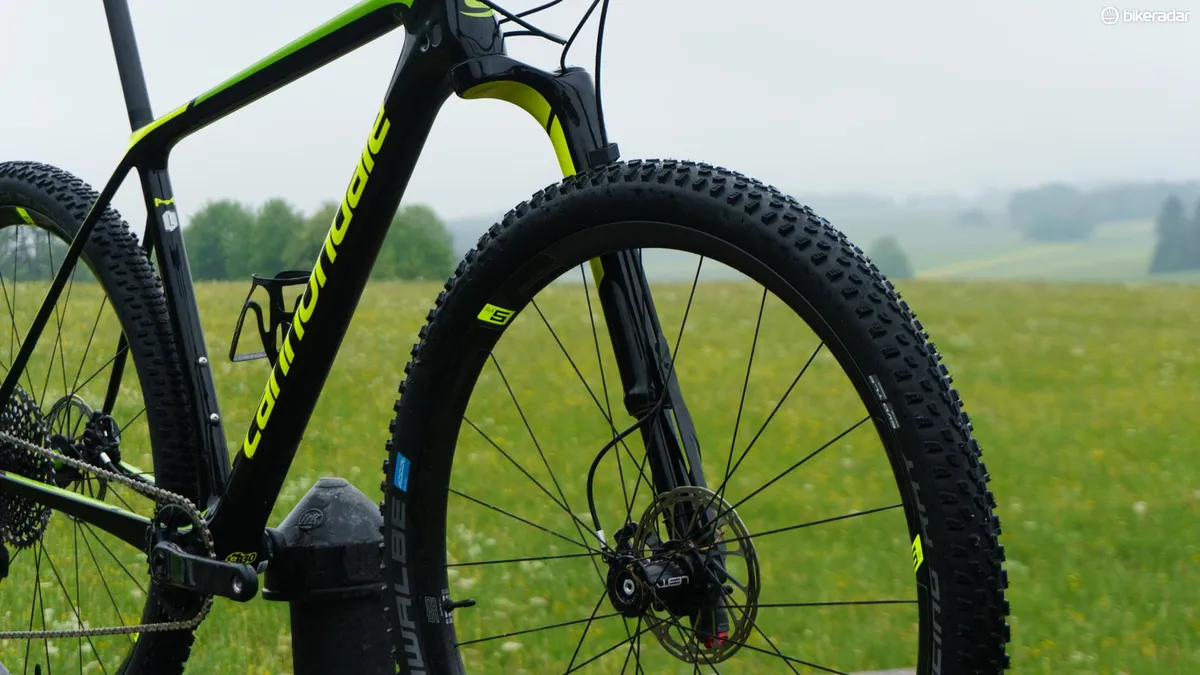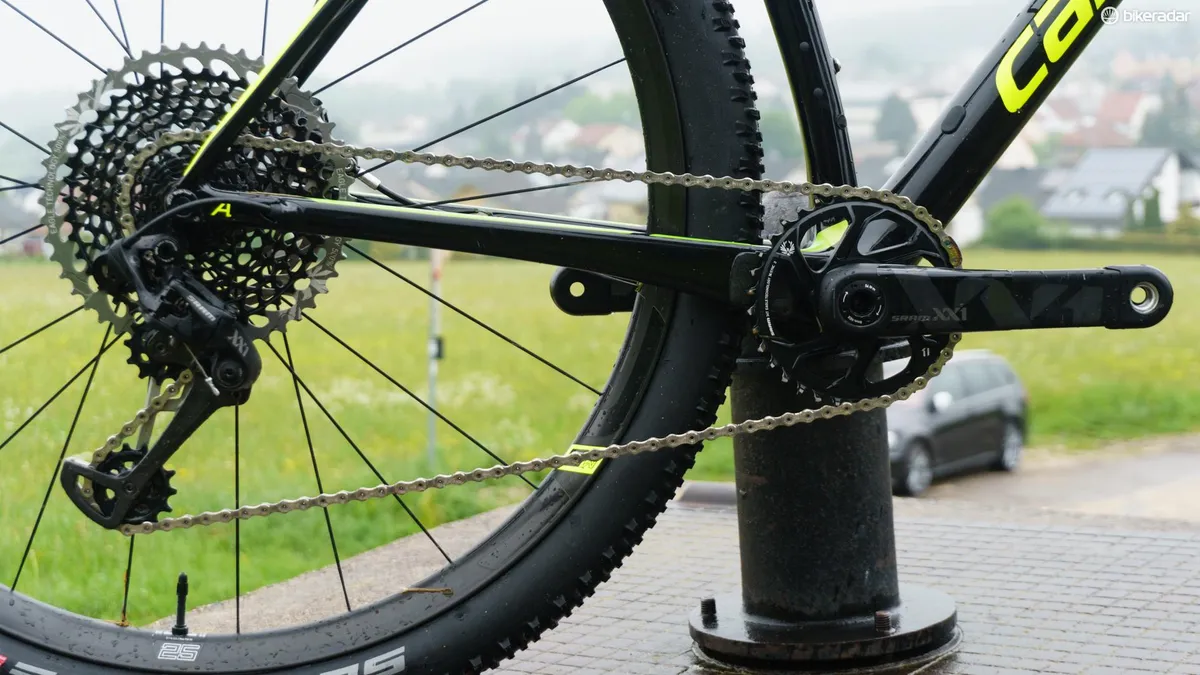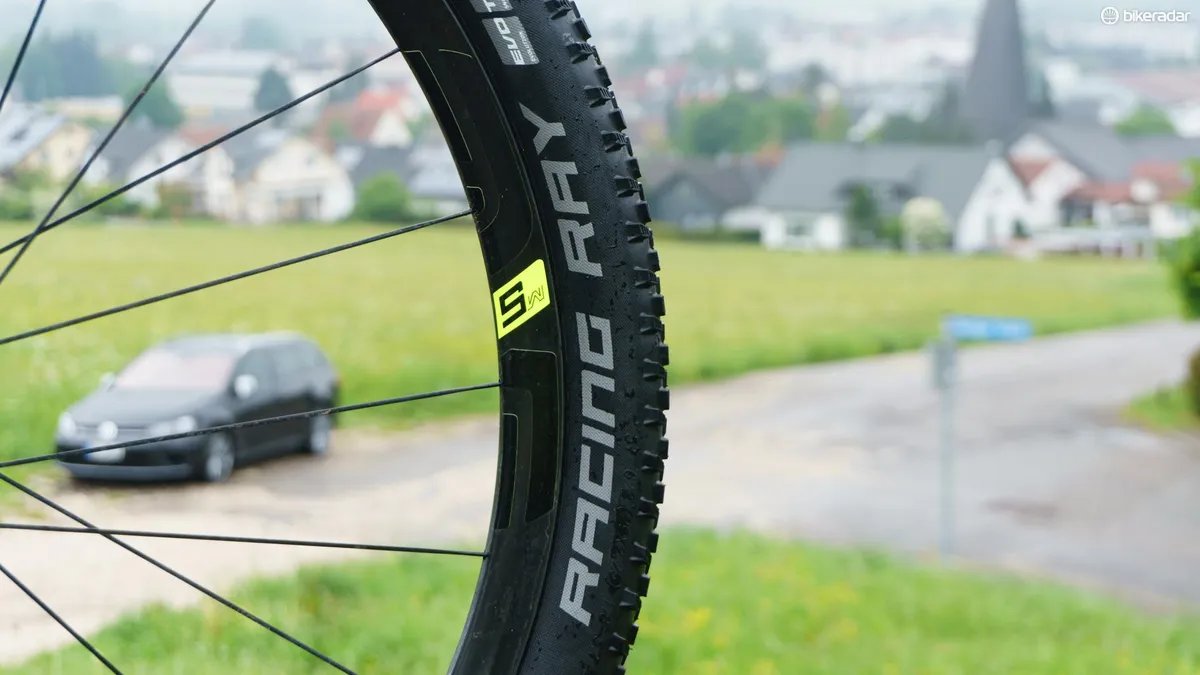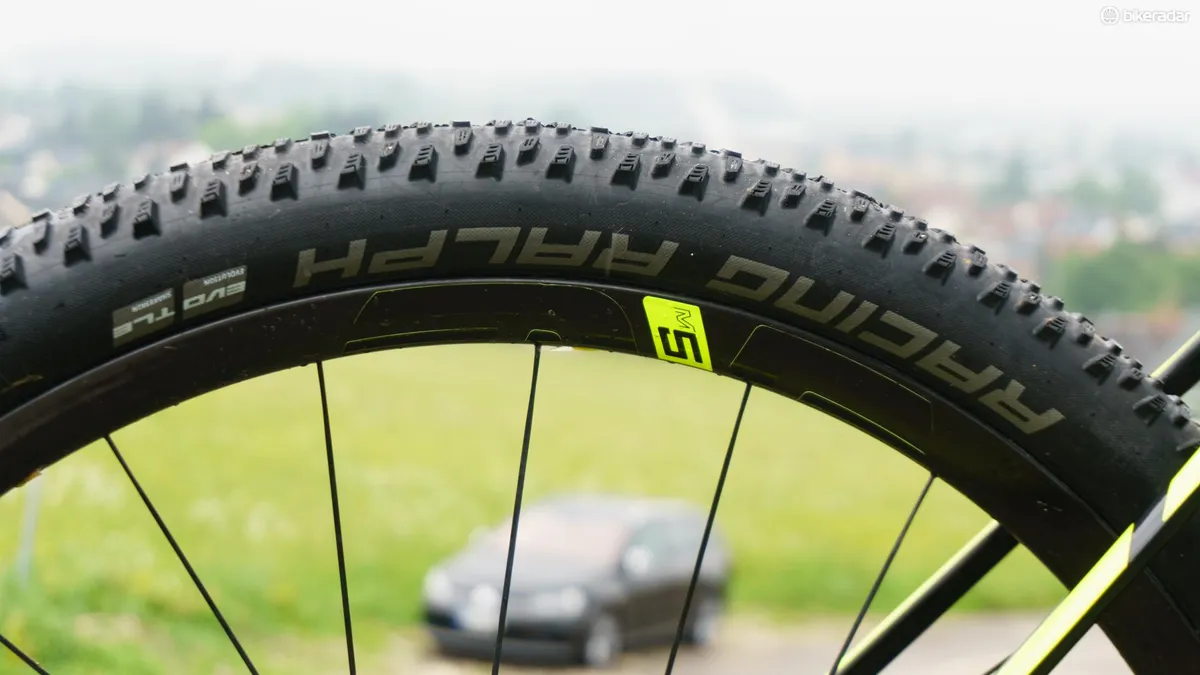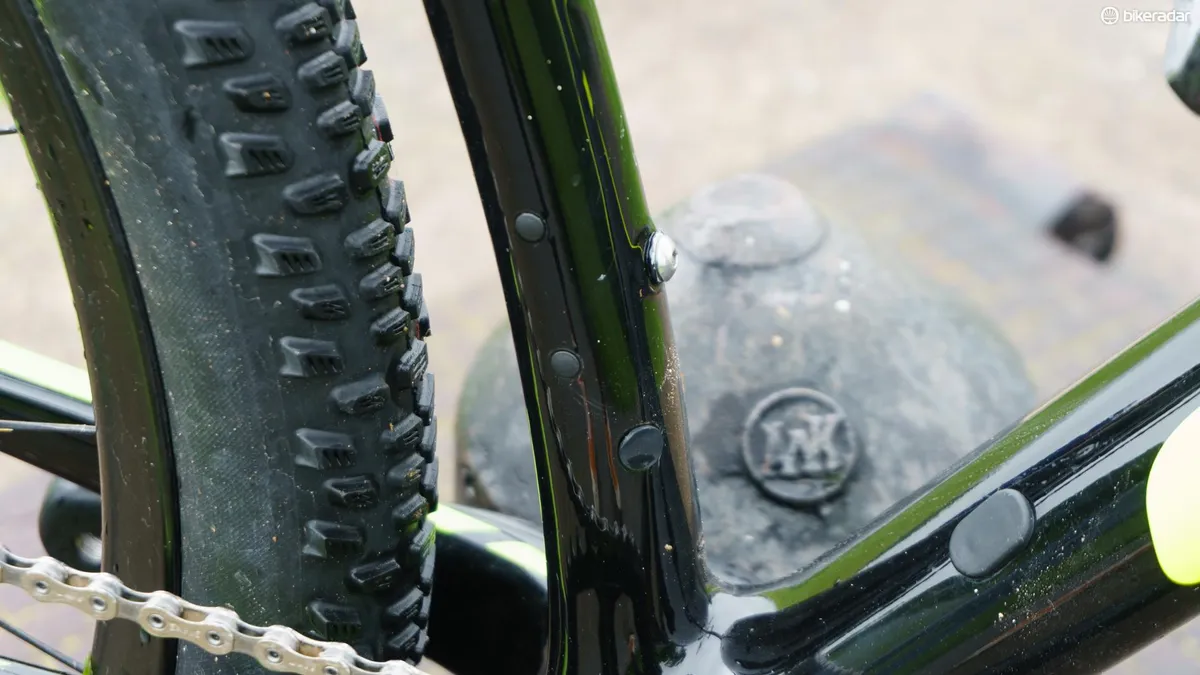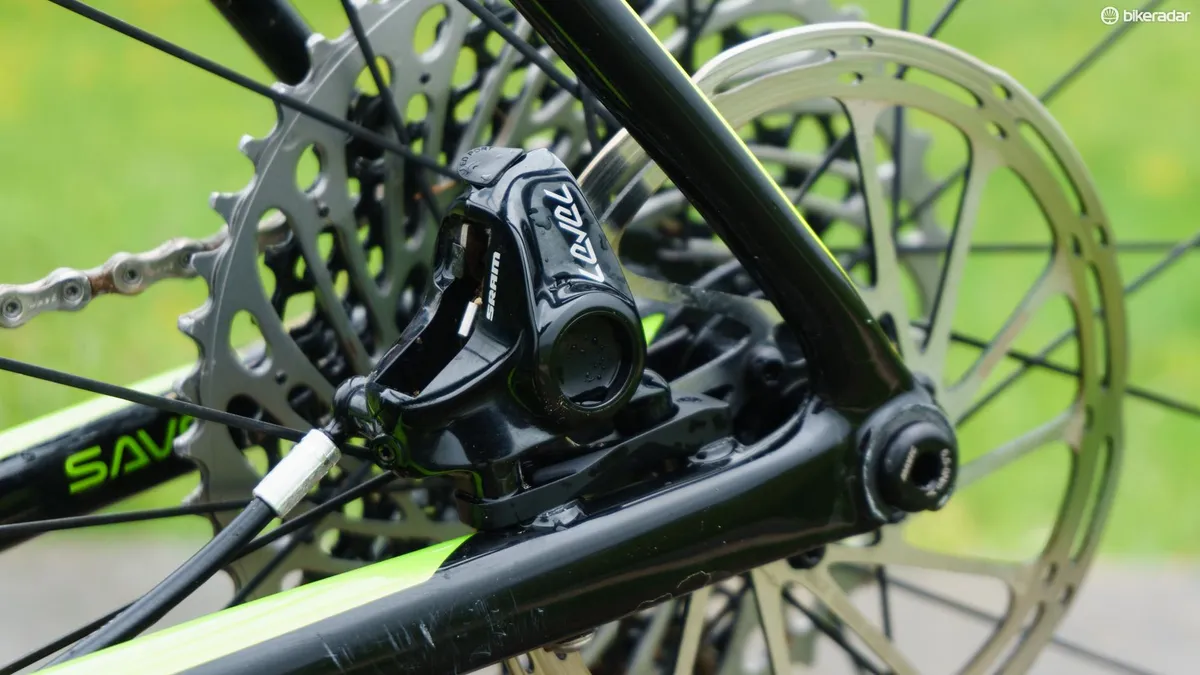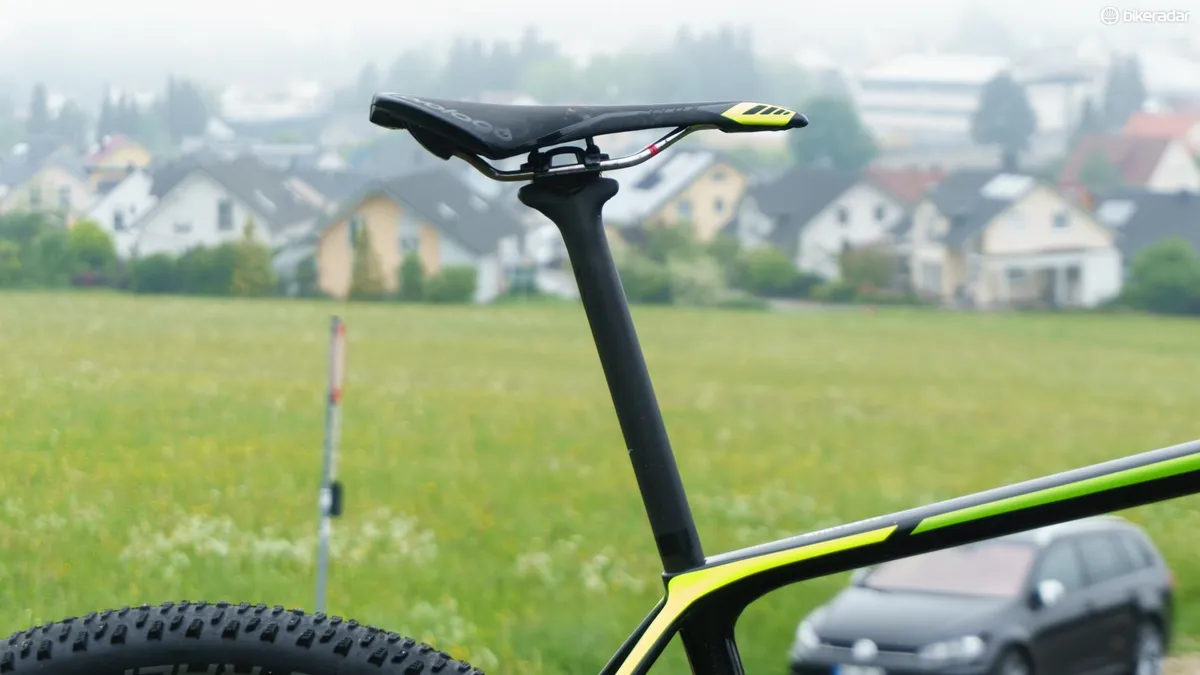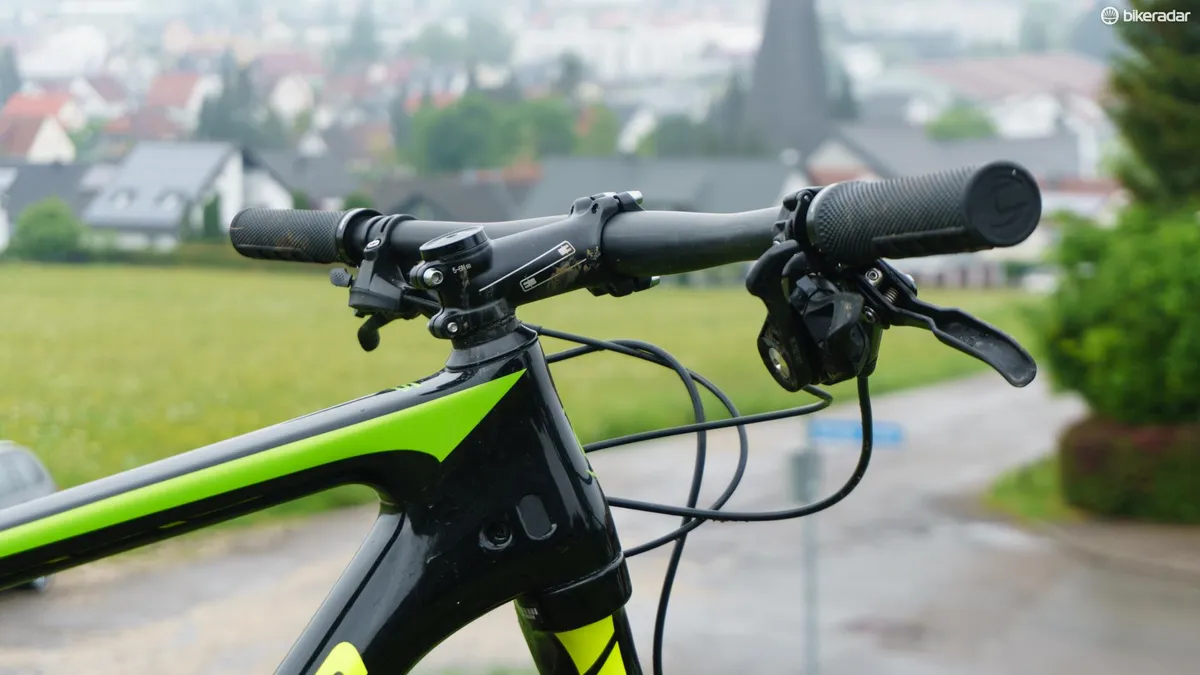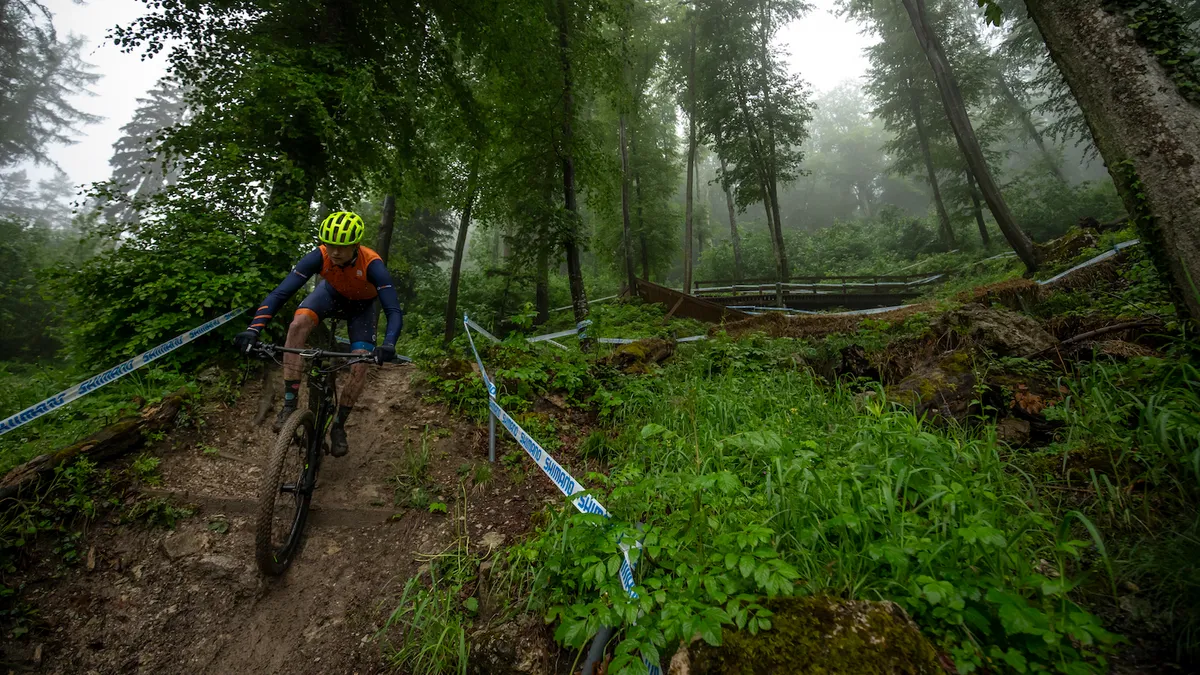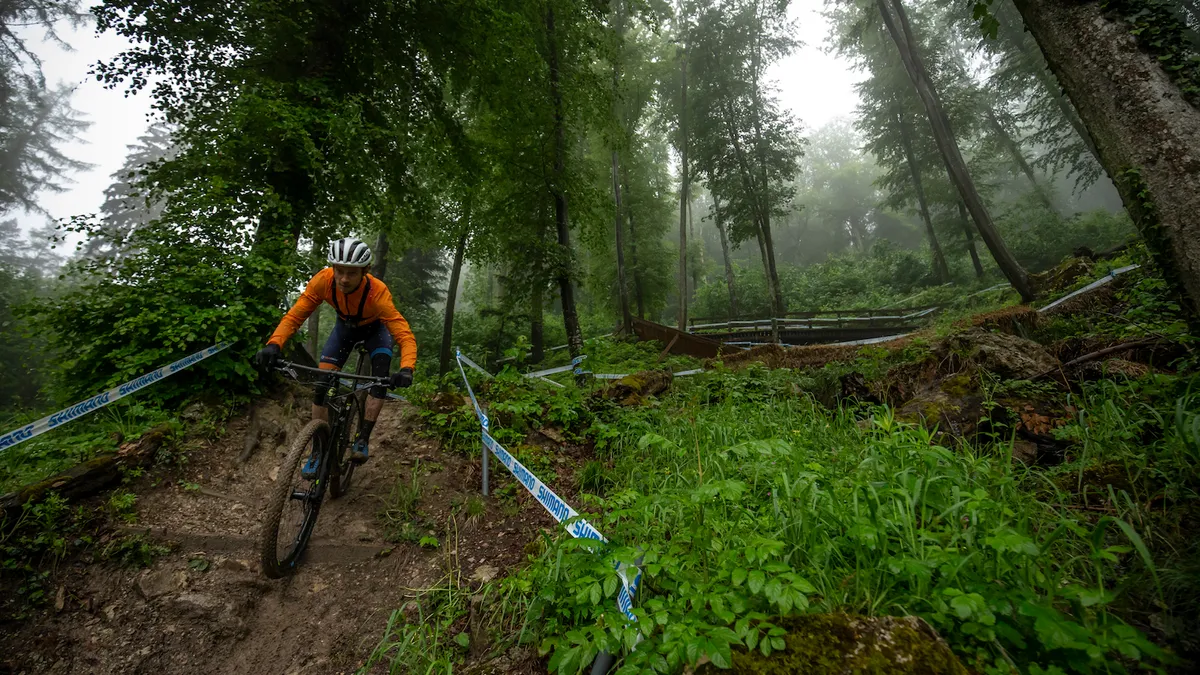Cannondale’s latest F-Si may not be the absolute lightest race hardtail and its unique design elements add complications, but few bikes can turn heads or pedals like it.
- Everything you need to know about the Cannondale Lefty Ocho
- A year of hard riding on the Cannondale Scalpel Si Team
Cannondale F-Si frame
For 2019, the F-Si frame is an evolution, not an all-new design, but it’s a significant one. The main tubes are bigger, the integrated seat clamp allows slightly more seatpost flex (or use of a dropper) and there’s clearance for 2.35in tyres. At a claimed 900g, it’s 80g lighter than before, but still just shy of the 890g Specialized S-Works Epic and 51g adrift of the Scott Scale RC.
More significantly, the head angle has been relaxed to 69 degrees, making it one of the slackest in its category. Neat touches include a minimal ‘flat mount’ rear brake and a through-axle system with open non-driveside dropout that could save vital seconds on wheel changes.
The 6mm driveside offset of Cannondale’s ‘AI’ (Asymmetric Integration) system means you need a specific (or at least redished) rear wheel though.
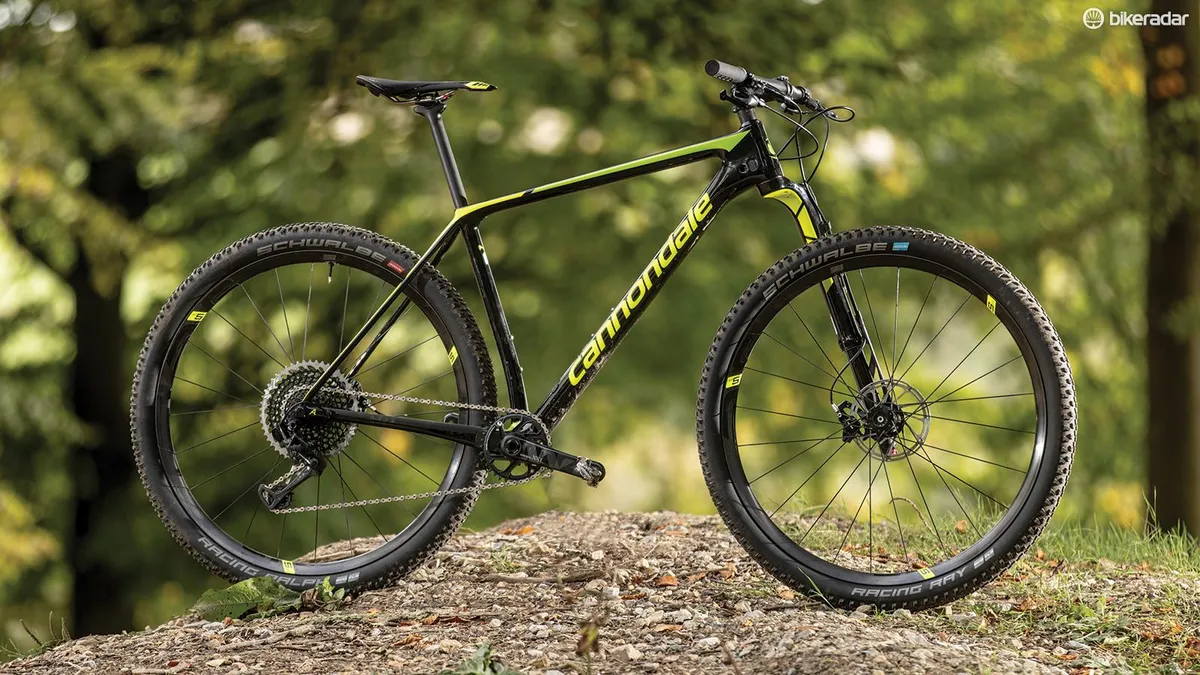
Cannondale F-Si kit
The single-sided Lefty Ocho fork needs a unique hub too, but the new removal/fit system is neater and the cable-operated lockout is easier to work with too. Use of a standard tapered steerer tube (rather than the straight steerer and dual crowns of the Lefty 2.0) lets you use a conventional stem.
As you’d hope from a fork that’s missing a leg, it’s light (1,446g claimed), although still slightly heavier than Fox’s 32 SC.
Check out our first ride review of the Cannondale F-SI on our YouTube channel
With no Cannondale cranks this year, the World Cup bike gets a SRAM XX1 Eagle/Level Ultimate spec. Super-stiff 25mm ENVE carbon rims are laced to F-Si-specific Cannondale/DT Swiss hubs and shod with Schwalbe’s fast but relatively grippy 2019 Racing Ray/Ralph tyre combo, in a 2.25in width.
While the stem is a conventional (for racers) 90mm length, the carbon bar is a 760mm wide, but still flat, to keep hands low over the 29in front wheel.
Cannondale F-Si ride impressions
It may not be the lightest off-the-peg racer you can buy, but, at 8.63kg, there’s still minimal resistance to getting the F-Si going seriously fast on smooth terrain. Power delivery is pretty direct, with just a small amount of softness compared to the most rigid rear ends. Add the stiff rims, and there’s plenty of feedback on what the rear tyre is doing.
While Cannondale say it has designed more twisting flex into the Ocho than on previous Leftys, it’s still well within the ballpark of compliance for a lightweight race fork. There’s just a bit of shimmy as you dive into turns on the brakes and occasional twitches when you’re grunting the pedals round.
Roller bearings, rather than guide bushes, mean low initial stiction and increased sensitivity, and, unlike on some skinny-legged race forks, things stay that way even when you’re turning or braking hard. A hard compression tune means the fork never feels buttery plush, but paired with a low-pressure (20psi) front tyre it gives a smooth enough ride. The naturally progressive air spring takes big hits pretty well too.
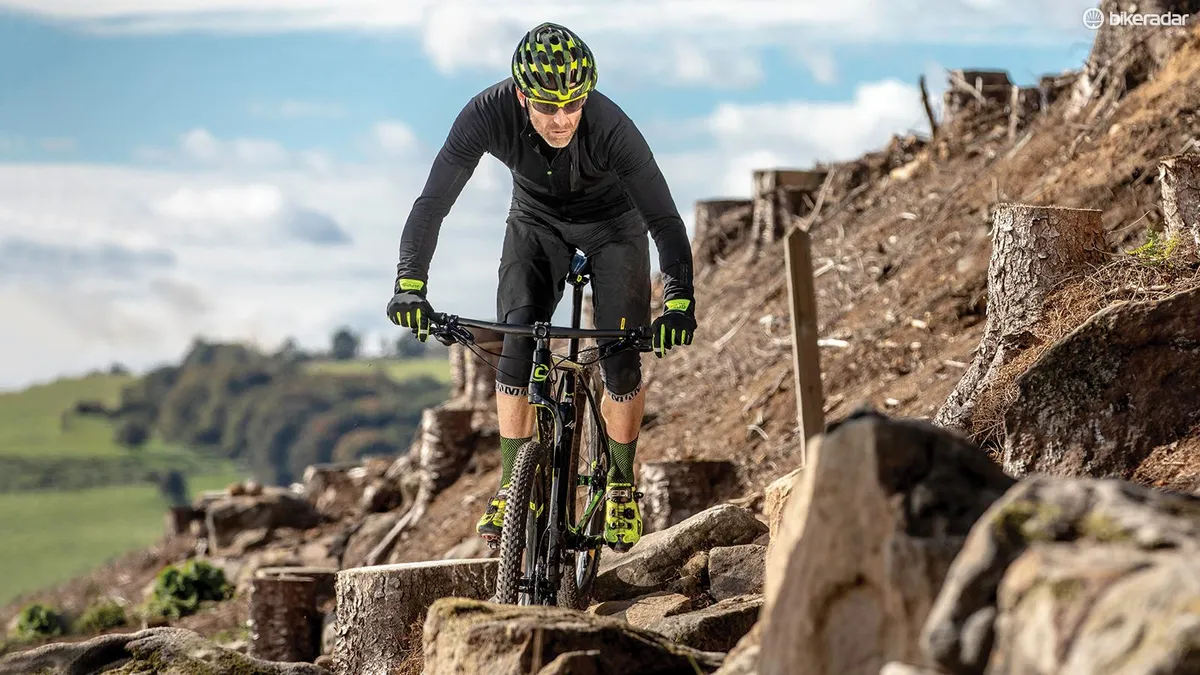
The 55mm fork offset, long stem and wide bar mean there’s an old-school twitch and lurch to the handling that takes getting used to. But once you learn to commit to the curve and trust the fork to keep tracking, you can carve descents with serious speed and commitment. It’s less needy on climbs – a bonus if you’re on the mental limit.
While the rear end skims the edges off the most abrupt slams, trying to push on through stutter bumps, root spreads or even lumpy grass is a staccato experience that can sap patience and power. That’s surprising because it’s where the previous F-Si excelled, but now it’s definitely more jarring than the smoothest in its class. A lot of that may be due to the rims, but, because the wheelset is so specific, we weren’t able to try the frame with any other options.
